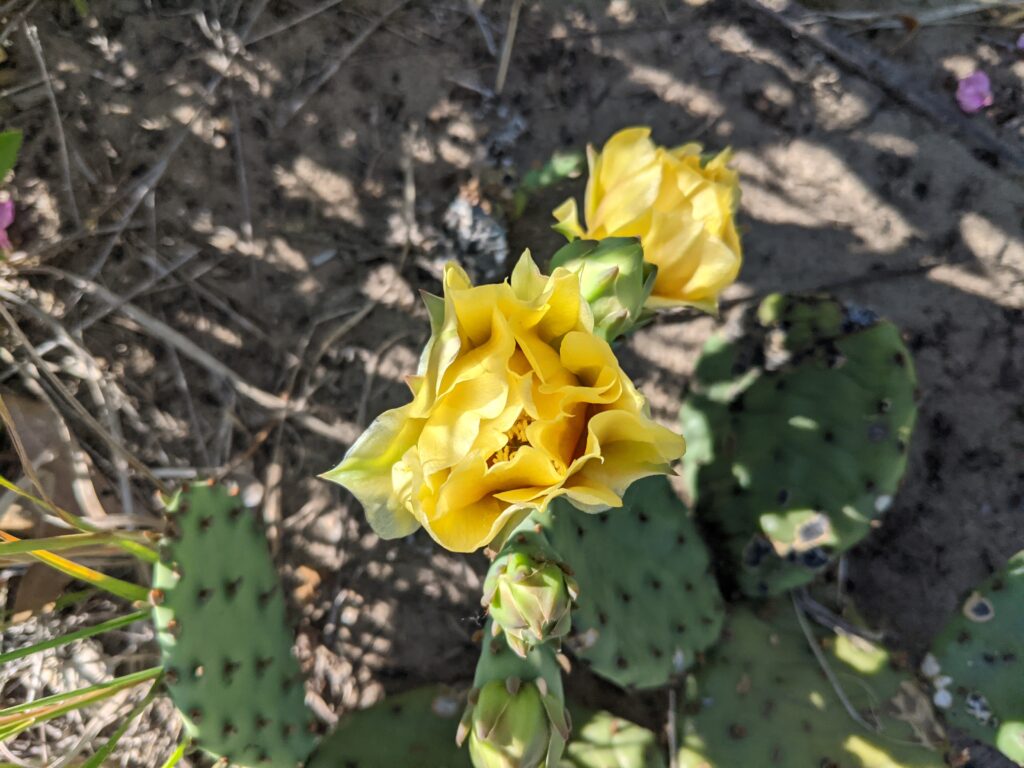By Cameron So, a PhD student at McGill University
Imagine stumbling upon a hidden patch of biodiversity, where rare plants bloom only in the early months of Spring. That’s exactly what I discovered in small pockets of Southern Ontario, a region surprisingly rich in plant diversity. While you might be familiar with Canadian goldenrod or Common milkweed when thinking about local flora, there are numerous native plants that are often conspicuous, unheard of, and overlooked. That’s because many areas rich in plant diversity are often tucked away within unique ecosystems by the Great Lakes.

Over the past two years, my research has taken me to some of Southern Ontario’s most concealed and remarkable ecosystems nestled by the Great Lakes. From the soft sands of Pinery Provincial Park by Lake Huron to the open understory of St. Williams Conservation Reserve by Lake Erie, and even an old prairie not far from Lake Ontario, each location has unveiled its own unique natural wonder. Although they varied widely, one commonality connected each location. Amidst the prairies, oak savannahs, and restored farmlands was a plant so beautiful yet potentially at-risk – the Sundial lupine (Lupinus perennis), a plant of great research interest.


Having long admired the West Coast mountains and their abundance of alpine lupines, I was surprised to learn that a congeneric Lupinus existed in my own backyard where I grew up. With iNaturalist maps as my guide and a few insights from local park staff, my first encounter with the Sundial was right in Toronto, in the famous land of High Park!

I quickly became enamored with lupines. Their palmate leaves are so unique that it’s difficult to miss them once you see them. In late May and early June, lupines burst into stunning purple and white flowers. Flower colour often varies between individuals, from shades of dark lavender to blue to white. Once a couple hundred plants begin to bloom, it’s impossible to glance away from a landscape painted purple.
What’s so special about lupines? Beyond their local at-risk status (imperiled in Ontario and at-risk in 13 US states), lupines play a crucial role in the ecosystem. They’re not just a source f of beautiful Instagram photos, but they’re a lifeline for at least 3 at-risk butterfly species, including the mottled duskywing which was recently re-introduced in Pinery Provincial Park by the Ontario Butterfly Species at Risk team. These plants are also bustling hubs for bumblebees, sweat bees, and other insects. Their persistence is an indicator of good ecosystem health for oak savannahs and prairies. Declining populations are often indicative of increased canopy cover by succession, reduced fire, and poor water drainage in soils; these characteristics often affect other prairie and savannah species.



My fieldwork, co-led by MSc student Maggie Blondeau, took us across Southern Ontario in a soccer-mom van filled with excitement and purpose. Joined by three incredible undergrad field assistants – Nicole Cappellazzo, April Kowalchuk-Reid, and Andrew Kemp – we surveyed numerous natural populations, recorded GPS locations of plants, and gathered important leaves and seeds for future experiments. This journey even extended to Ohio, Indiana, and Michigan, broadening our geographical breadth of visited sites.
Our adventure wasn’t limited to just plants. We encountered diverse wildlife, from hognose snakes to sleepy bison, and even the urban jungle of Chicago! One astonishing discovery was the presence of cacti (eastern prickly pear) at sites with similar latitudes to Toronto!

This past summer (2023), with Nicole Cappellazzo and new field assistant Gabrielle Tai, my research was expanded to sites in Vermont, New York, Illinois, Wisconsin, and Minnesota. We witnessed an incredible amount of biodiversity and diverse landscapes. Among many of my cherished memories was the distinct and prehistoric-sounding calls of sandhill cranes and, albeit brief, the surprise encounter with a black bear in Minnesota.


Thanks to funding from QCBS, I also attended Conservation Genomics 2023 in Montana, USA. I delved into important concepts in population genomics, including inbreeding and coalescent theory, and mastered tools such as Snakemake. Back at McGill, I shared the tool Snakemake with McGill Biology graduate students and postdocs, offering a new way to create reproducible science in complex and computational-heavy workflows. Significantly, I learned important genomic skills that I will use to understand how populations across the Sundial lupine’s range differ. Remember the leaves that I collected earlier? I extracted and sequenced DNA from those leaves, and with this data, I hope to answer questions that will inform conservation management. You can read more about my research here.

I’m thankful for the opportunity to conduct fieldwork and my research. Without funding from QCBS and my supervisors, and without the intensive help from my field assistants (Andrew Kemp, Nicole Cappellazzo, April Kowalchuk-Reid, Gabrielle Tai), research students (Jerome Gingras), volunteers (Carolyn Yang), and MSc student Maggie Blondeau, I could have not accomplished all that I have so far. I still have 1 to 2 field seasons to go, with another experiment to set up near Montreal, but I can’t wait to get back out there.




As I reflect on this journey, from that first glimpse of a Sundial lupine in High Park to the expansive field of lupines in Minnesota, I’m reminded of the endless wonders hidden in plain sight, waiting for us to discover and cherish.

About the author: Cameron So is a PhD student in Anna Hargreaves’ and Dan Schoen’s labs in the Department of Biology at McGill University. He studies the conservation value of range-edge populations in plants using Sundial lupine. You can read more about his work at www.cameronso.ca

0 Comments